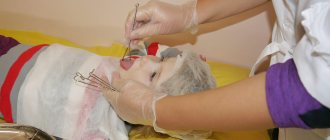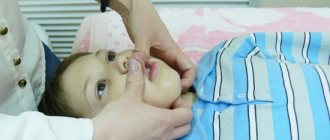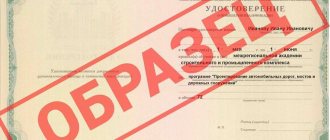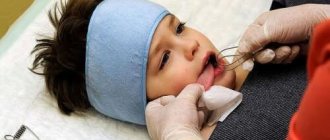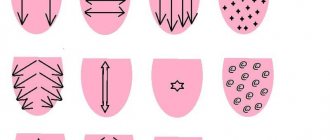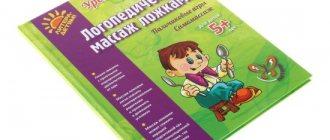A delay in speech development in a baby can lead to serious consequences. With the help of speech, a child develops emotional perception, more easily assimilates new information, and learns about the world around him.
Diagnosis of speech development is carried out at 3-4 years of a child’s life. If a speech therapist determines violations, the parents’ task is to begin correcting the defects as soon as possible. The younger the child, the faster the speech apparatus develops.
Types of tongue massage?
Tongue massage can be done manually. Manual speech therapy massage is performed by a speech therapist using the fingertips. Manual speech therapy massage is both an independent stage of tongue massage and can be a preparatory stage for the second type of speech therapy massage - probe massage of the tongue.
The second type of speech therapy massage is probe massage. Probe speech therapy massage is performed with special speech therapy probes. Speech therapy probes are special “sticks” that have different shapes to influence different structures of the oral cavity. Speech therapy probe massage is deeper than manual tongue massage. In some cases, a specialist may replace the probe with a toothbrush or other device. The main thing is that the specialist clearly understands what he wants to achieve!
Contraindications
Massage courses are prescribed by a neurologist after a complete examination. It should not be used for epilepsy of various forms, as it can provoke seizures.
Temporary withdrawal is given for any infectious or somatic diseases. Probe massage should not be performed for stomatitis, caries, gingivitis, or skin diseases. Herpes and oral infections also serve as a medical outlet for procedures.
It should not be done if there is strong pulsation of the arteries, high blood pressure, or poor physical well-being.
If you have nausea, vomiting, or fatigue, you cannot conduct a session; it is better to reschedule it for another time. A speech therapist examines each child before performing a massage.
Who does tongue massage? Who has special knowledge for this?
Despite the fact that the word massage implies the participation of a massage therapist in the process, in the case of speech therapy massage this is not the case! Speech therapists provide speech therapy massage! But not all speech therapists are ready and able to perform massage. Typically, a speech therapist who has gained experience and understands that many problems cannot be solved without speech therapy massage receives additional education on the topic of “speech therapy massage.” After training and receiving a special document, a speech therapist is considered a tongue massage specialist.
It should be added that you can do tongue massage yourself, for example, when a mother does basic techniques to her child. But all the same, it is better to entrust the appointment of massage and control over its effectiveness to an experienced speech therapist-myofunctional therapist! What distinguishes a simple speech therapist from a speech therapist-myofunctional therapist is that the latter understands in more detail and is able to work with the muscles of the articulatory apparatus and masticatory organ.
Advantages and disadvantages
Massage with speech therapy probes, when performed correctly, gives good results. Its positive effect on the patient’s body is expressed in the following:
- speech development, improvement of sound pronunciation;
- voice normalization;
- restoring proper breathing;
- eliminating neurological disorders, improving the functioning of the central nervous system;
- normalizing muscle tone;
Universal oral massage can also be performed on healthy children at the initial stage of speech development. This will contribute to the correct formation of speech skills.
There are few disadvantages to probe massage procedures, but you shouldn’t turn a blind eye to them:
- If done incorrectly, the child's pronunciation may deteriorate.
- Massage manipulation alone is not always enough to restore speech. You cannot ignore other recommendations of the speech therapist: taking medications, physiotherapeutic procedures, articulation exercises.
How is tongue massage done?
Tongue massage is carried out in a special speech therapy room. For example, a speech therapist’s office at a Family Dental Clinic looks like this:
Speech therapy massage is carried out in a relaxed state for the patient. This is usually lying down, reclining or sitting. If a tongue massage is performed on a small child, then the child sits on the mother’s lap. A tongue massage takes about 15 minutes. It is usually perceived positively by patients because it does not cause negative or painful conditions. The specialist performs a tongue massage wearing special disposable gloves. Massage probes are sterilized after each patient! This is an advantageous difference between medical and other organizations where tongue massage can be performed, for example, kindergarten, etc. In institutions of this type, such as kindergartens, speech therapists are not provided with either gloves or sterilizers. Therefore, they massage with bare hands and wipe the probes with alcohol. This, from our point of view, is not enough to ensure patient safety!
Probe kit
Speech therapy probes for producing sounds (authored by Rau) are not suitable for massage. A special set was developed by E. V. Novikova. It includes 8 main probes plus 4 additional ones. A patent for the development was received in 2000.
Probes are used to work with articulatory organs and the forearm. Stimulating the muscles of the dominant hand improves motor skills and promotes handwriting development.
The first tool is a fork , which looks like two blunt needles slightly apart to the side. A slight tingling sensation has an activating effect.
The second instrument is the eight . At the end there is a round loop that “grinds” the muscles.
The third, fourth, fifth tools are “sleighs” of different sizes. The shape of the probes resembles the rounded runners of a sled, hence the name. You can work with either side of the tool.
The sixth tool is a hatchet , which looks like two tightly pressed loops. Used for pressing on the surface of organs, sliding. Normalizes tone and increases muscle mobility.
The seventh is a cross, the loops are rounded and intersecting . It is used to stimulate the muscles of the tongue and develop its elevation.
The eighth tool is a pusher , a small loop raised at a right angle to the probe handle. Allows you to stimulate mobility and elasticity of muscles. When you press on the tongue, it creates tension; after the pressure is removed, the organ relaxes.
The ninth tool (additional) - tweezers , looks like two large rounded loops located parallel to each other. It is convenient to take the tongue with a probe and gently move it.
The tenth tool is a pull-up tool that looks like a low, wide frame. Used to stretch the frenulum.
The eleventh tool is a swan , a small loop, bent at the base, after which there is a small vertical section of the probe, which is bent at a right angle to the probe handle. Massages the palate, eliminates salivation.
The twelfth is sliding, looks like an elongated triangle with round corners. Used for sliding movements.
Some authors made their own adjustments to the set of massage probes. Vorobyova together with Krupenchuk created the author's set. It consists of 9 instruments. The creation of probes with different coils with small edges can be considered an innovation. This tingling sensation can effectively stimulate the nervous system.
Who is tongue massage recommended for?
Tongue massage can be both stimulating and relaxing. And also combined, when one area of the tongue needs to be relaxed and the other stimulated! This is where the indications for tongue massage come from. Speech therapy massage is indicated for patients:
- with speech impairments;
- disorders of chewing and swallowing function;
- with malocclusion;
- undergoing orthodontic treatment (bite correction and teeth straightening);
- undergoing orthopedic treatment (dental prosthetics);
- with a short frenulum of the tongue for the purpose of non-surgical stretching;
- with hypertonicity of the tongue and masticatory muscles (bruxists and claunchers - people who clench and grind their teeth);
- with increased stress on the speech apparatus (teachers, lecturers, etc.).
Tips for parents
In order for speech therapy probe or home massage to bring benefits and only positive emotions to the child, parents should follow these tips:
- Use all the techniques recommended by the speech therapist to resolve the problem. This can be not only massage, but also speech therapy exercises, communication with a psychologist, medication treatment, and physical therapy.
- If massage procedures, despite all the efforts of the specialist, cause discomfort in the child, you need to come up with some way to encourage him to visit the speech therapy room. For example, promise to buy a toy or sweets that the baby would like to receive.
- Communicate more with your child, monitoring your pronunciation and his. Correct his mistakes, pronounce the correct pronunciation several times.
- Do articulation exercises more often.
- Play speech therapy games with your student to help eliminate pronunciation problems.
- Don’t worry if after the first or second course of procedures there are no results: the baby still speaks incorrectly. Often 3-4 courses are required to achieve the desired effect. Everything will definitely work out! The main thing is to believe in your strengths and the abilities of your child.
Related posts:
- Massage for speech development - speech therapy interventions Massage for the correction and development of speech is carried out in various ways....
- Logorhythmic classes and correctional means By various means, speech therapy classes contribute to the effective correction of speech in children...
- Rhoticism in speech - complete information Rhotacism (problem with the sound [P]) is the most common disorder in children...
- A child does not know how to say R - we’ll show you how to teach it. To teach a child to pronounce the letter R, you need to regularly perform special...
Speech therapy massage and dentistry! What's the connection? And what do we use in Dial-Dent?
People with malocclusion and uneven teeth almost always have improper and unbalanced functioning of the muscles of the tongue, lips, chewing muscles and other muscles of the masticatory organ. Moreover, the modern concept of the causes of the formation of bite defects suggests that most dental defects are caused by improperly working muscles. Incorrect speech, improper functioning of the tongue when swallowing and chewing, asymmetrical pressure of the tongue - all this leads to the fact that the teeth can move in different directions under certain conditions. This is how a deformation of the bite occurs, which is more pronounced the more incorrectly the tongue and other muscles work.
Most orthodontists, without delving into the work of muscles and without consulting with speech therapists, install braces or aligners and straighten the teeth without taking into account the condition of the muscles. This approach is outdated and almost always leads to relapse, when the teeth become crooked again some time after treatment. Knowing this, older orthodontists force their patients to wear retainers. Retainers are structures that keep teeth aligned. This could be a wire glued to the teeth or a plastic mouthguard to wear at night.
At Dial-Dent, we always take into account the muscular cause of malocclusion. The participation of a speech therapist in the diagnosis and in the process of straightening teeth makes it possible to remove or correct the myofunctional causes of deformities. This interdisciplinary approach is more modern and gives the best and most stable treatment results! After treatment, relapses do not occur because muscle balances are leveled. Accordingly, the orthodontic treatment itself occurs faster and without problems with the participation of a speech therapist-myofunctional therapist.
Tool handling and storage
Tools for massage procedures need to be chosen from high-quality, proven companies. Main materials are titanium or stainless steel.
An important element of preparation for massage is the processing of probes. Each set of tools is used no more than 1 time. After the patient, the probes must be processed:
- Immediately after use, wash under running water and detergent.
- Place in a bath with a sterilization solution for 30-60 minutes (Alaminol, Veltolen, ID-212, Virkon, Vapusan-2000, Lisetol LF, Septodor, Erinox and others ).
- Rinse under running water.
- Sterilize in a metal sterilizer (by boiling for 10-15 minutes from the moment the water boils) or in an autoclave (steam). Plastic probes (balls) do not withstand the sterilization process, so such instruments can only be individual.
Treated devices should be stored in a UV bactericidal chamber to avoid secondary colonization by microorganisms.
Cost of tongue massage at Dial-Dent. Specialist in speech therapy massage.
At the Family Dental Tongue Massage or speech therapy massage, speech therapist-myofunctional therapist Tatyana Borisovna Tsukor is engaged. Graduated from Moscow Pedagogical State University. Lenin. Work experience more than 15 years. Speech therapist teacher of the highest qualification category. Laureate of the competitions “Heart given to children 2008” and “Heart given to children 2010”.
The cost of a session with a speech therapist is 3,500 rubles. The duration of the session is from 30 minutes to 50 minutes depending on the task and the age of the patient. If necessary, the session also includes speech therapy massage.
Being a unique speech therapist who has been collaborating with dentists for a long time and successfully, Tsukor T.B. conducts training courses for both orthodontists and speech therapists. The course covers all aspects of speech therapy massage. Of course, every orthodontist should know about the capabilities of such a powerful tool as speech therapy massage. Training is carried out both as part of presentations at congresses, and individually or in small groups.
Our speech therapist also conducts classes via Skype. The cost of such a lesson is 2500 rubles. As you understand, speech therapy massage cannot be done via Skype, so if you need a massage, you will still have to come to Dial-Dent.
You can make an appointment with the Family Dental speech therapist Tatyana Borisovna Tsukor by calling the clinic +7-499-110-18-01 or using the form on the website. You can ask questions about speech therapy, as well as massage training, to T.B. Zukor on her page in.
General recommendations for conducting
The duration of the course is calculated individually. On average, 10 procedures performed every other day are sufficient. Between cycles there is a break of a month. Some speech therapists prefer to include massage before each session.
The duration of the procedure depends on:
- from age;
- degree of defect;
- personal characteristics.
The minimum time is 5 minutes, the maximum is 25. The impact should not cause pain, slight discomfort is allowed. Children may be afraid of probes because they resemble medical instruments. You can let them touch them, play with them, or have a session with toys.
In case of negativism, hysterics, aggression, the first sessions are kept as short as possible. Start by stroking the lips, cheeks, and tip of the tongue. With a pronounced gag reflex, the effect begins with a light one, gradually moving deeper into the mouth.
Massage sessions are carried out in a well-ventilated area. It should be warm, bright, cozy.
Setting whistling sounds with probes No. 1, No. 2 and No. 4
For lateral and nasal pronunciation of whistling sounds, when it is not possible to obtain a groove along the midline of the tongue, probe No. 1 is used.
First, using a probe, a groove is formed with the tongue protruding from the mouth. The child is asked to blow into the groove formed in the tongue and then this skill is reinforced, gradually eliminating mechanical assistance.
To make the sound “C”
The speech therapist invites the child, without sticking out his tongue, to open his mouth and smile. Then he places the probe on the front of the tongue in the middle, holding the tip of the tongue with the base of the loop of the probe against the lower teeth. In this position, the child is asked to blow on the tip of his tongue. At the same time, the speech therapist lightly presses the probe on the tongue, forming a groove for escaping air and achieving the desired acoustic effect. After a series of training in pronouncing the sound “C” with probe No. 1, the child is able to reproduce the necessary articulatory pattern and correctly pronounce the sound without mechanical assistance. Then the sound is automated based on the speech material selected by the speech therapist.
The sound “3” is placed in a similar way, but with the involvement of the vocal cords.
To eliminate interdental and subdental sigmatism, especially complicated by malocclusion, probes No. 2 and No. 4 are used. The sound is made from defective pronunciation. The child is asked to pronounce the sound s-s-s for a long time...
At this time, the speech therapist, pressing on the tip of the tongue with the loop of probe No. 2 or probe No. 4 placed across the mouth in front of the lower fangs, slightly moves the tongue away from the lower teeth into the depths of the mouth. A gap is formed, necessary to reproduce the whistling noise. Gradually, the mechanical assistance is eliminated and the child can independently pronounce the sound.
Sound "Ts"
can be obtained using probes No. 1 and No. 2 in two ways.
The child is asked to pronounce the sound combinations ts-ts-ts...
Simultaneously with the pronunciation, the speech therapist holds the tip of the tongue
with probe No. 1
or
No. 2
at the lower incisors (according to F.F. Pay).
Pressing the tip of the tongue against the lower teeth, the child is asked to pronounce the sound s-s-s for a long time with a soft attack...
At the same time, the speech therapist presses the tip of the tongue with probe No. 1 or No. 2, slightly moving it deeper into the mouth (according to O.V. Pravdina). By controlling the probe, the speech therapist achieves clear pronunciation of the sound.
Soft sounds are set from hard base sounds. Delivered using probes No. 1, No. 2 and No. 4
whistling sounds are automated and differentiated.
